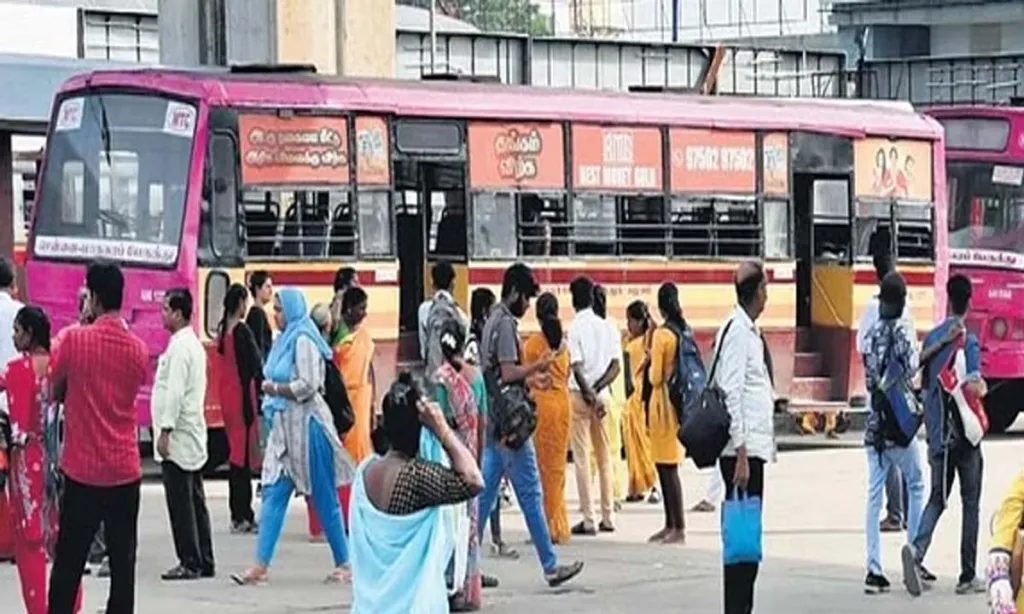Chennai/Madurai/Thanjavur: The state transport department claimed that the strike by CPI(M)’s Center of Indian Trade Unions (CITU), AIADMK’s Anna Thozhirsanga Peravai (ATP) and other trade unions of transport corporations had no significant impact . First day on Tuesday.
According to reports, the demands of the striking unions include signing of the 15th wage revision agreement to increase wages, filling vacancies in bus driver and conductor posts and release of dearness allowance (DA) of Rs 6000 per month for retired employees. Not released for last eight years.
According to Transport Minister SS Sivasankar, 95.7% services (16,836 out of 17,576) of Metropolitan Transport Corporation (MTC), Mofussil and State Express Transport Corporation (SETC) in Chennai and other parts of the state were operated as per normal schedule. , However, ATP’s R Kamalakannan rejected the claim and said that around 50% of the transport workers participated in the strike.
The buses were operated by workers belonging to DMK’s Labor Progressive Federation (LPF), Congress’s INTUC, VCK’s Labor Liberation Front and some other smaller unions. It has been revealed that optimum utilization of crew, route rationalization based on conservation and support of contract employees played a vital role in enabling corporations to weather the crisis.
Major bus terminals in the capital, including Chennai Mofussil Bus Terminus (CMBT), Madhavaram Mofussil Bus Terminus (MMBT), Poonamallee Bus Stand and the recently opened Kilambakkam Kalaignar Centenary Bus Terminus, witnessed moderate crowding on Tuesday. Passengers of CMBT and MMBT said that they did not face any problem in boarding the buses.
Bus strike in Madurai remains a challenge for school children
By 9 pm, 100% buses for MTC and SETC were in operation. An official statement noted that 10% of Villupuram Corporation buses and 5% of Kumbakonam buses remained off the road due to the strike. Meanwhile, a section of bus crew claimed that mofussil and MTC buses were operated for 50 to 75% of the trips due to shortage of workers.
“When a crew is appointed to a mofussil service in a Chennai-Villupuram TNSNSTC bus, he is expected to make two round trips between CMBT and Villupuram. However, most buses completed only one journey. The same crew was then assigned to a different bus on another route. Yet, on paper, two buses were recorded as running for the whole day,” said a conductor.
Similarly, the number of services on select routes was rationalized on patronage grounds, reducing bus crew demand by 50%. “Since it was a working day, there was less crowd at the terminus,” said a driver. Half of services on one route were cut, and the crews were used to drive buses on other routes.
In Madurai, school going children faced challenges in reaching their destinations due to lack of bus services. Similarly, people traveling from the outskirts, including Sholavandan, Chitamani and Panagari, had to wait for more than two hours to get buses.
Commuters face difficulties in Thanjavur
In Thanjavur, passengers faced difficulties as only 60% buses from Town Depot 1 and 55 buses from Town Depot 2 were operated. Commuters in Thanjavur and Tiruvarur had to wait for long hours for buses amid reduced services. In Kanniyakumari, sources said contract/temporary drivers and conductors were also involved in operating about 50% of the buses.
An LPF official said, “If the strike continues till January 11 or 12, it will become extremely difficult for the corporations to manage services.
Optimum utilization of crew, route rationalization and support of contract employees helped corporations weather the crisis
